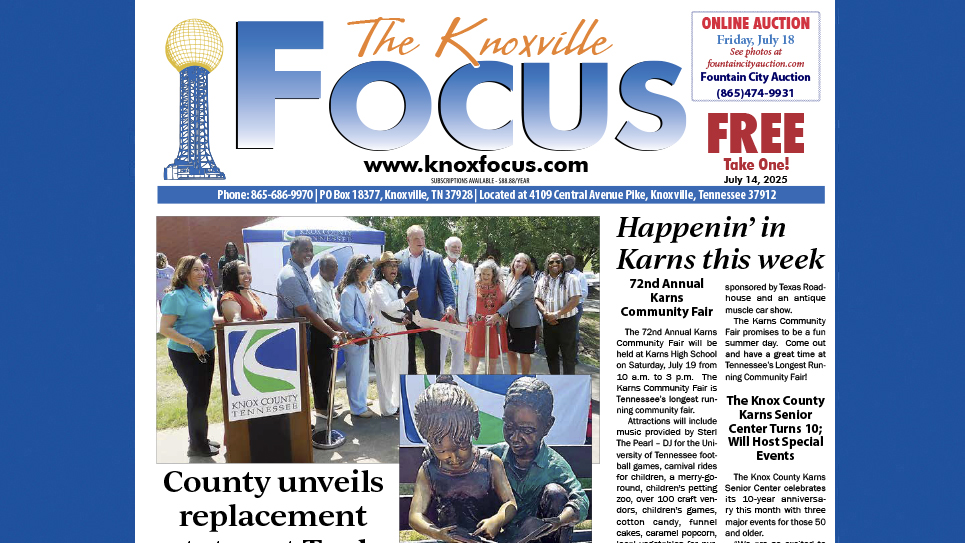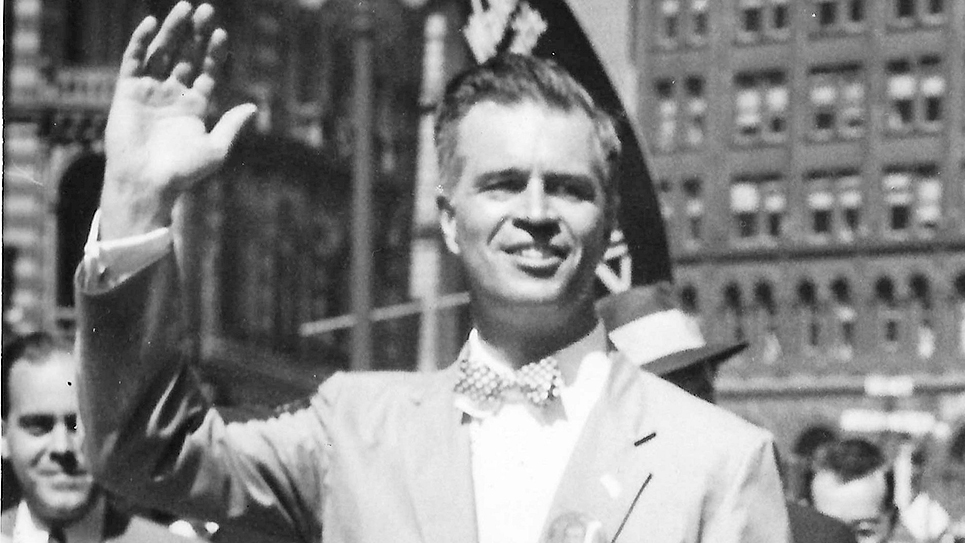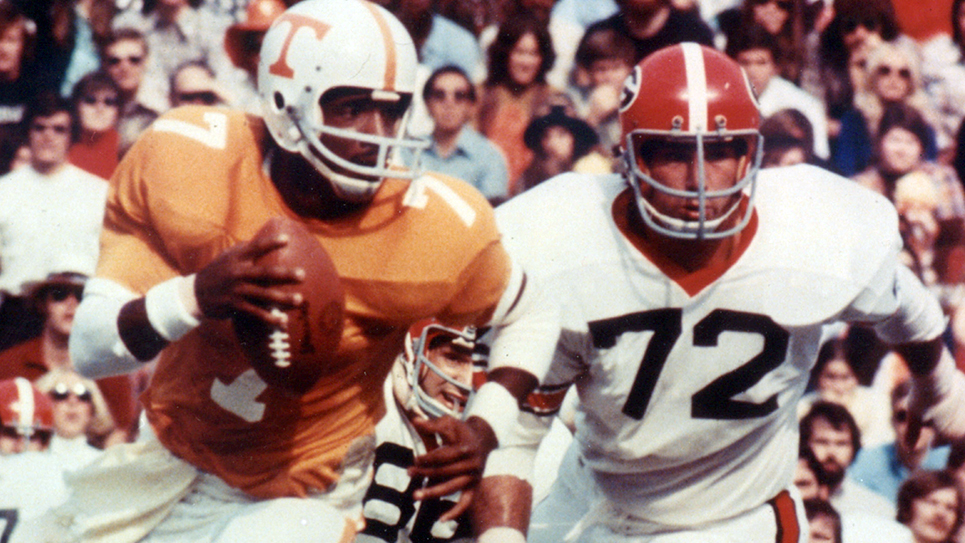By Tom Mattingly
In the days of Gen. Robert R. Neyland (and perhaps even before then), Tennessee wore its orange jerseys on the road. It was an article of faith.
That notion came to an abrupt end with an SEC’s “Gentlemen’s Agreement” in early 1971, giving the home team the choice of taking the school-colored shirts and the visiting team wearing the white shirts, except at LSU and, for a year or so, at Vanderbilt.
Tennessee head coach Bill Battle voted against the agreement, saying, “You’re darn right I did,” when quizzed about it in 2006.
That agreement was a big deal in those seemingly uncertain times in 1971. The Vols had worn their orange jerseys on the road up until that time, with three exceptions, all losses, to Texas (in the 1953 and 1969 Cotton Bowls) and the 1963 contest against Alabama at Legion Field. One Tennessee football historian has suggested that Vol fans believed the white jerseys were a “jinx.”
Many Tennessee opponents had worn their “home jerseys” when they played on Shields-Watkins Field, Alabama in crimson, Kentucky and Ole Miss in blue, UCLA in powder blue, and so forth.
There are classic pictures in Sports Illustrated of Tennessee in orange and Alabama in crimson, a cover shot of Mike Jones and Dennis Homan going for the ball in the 1967 game and a two-page shot of Hal Wantland diving over the Tide line in the 1965 game, both games played at Legion Field in Birmingham.
The genesis of the white jersey agreement may have come in part from the 1969 Tennessee-Vanderbilt game at Neyland Stadium. It was a sunny late November day, Vanderbilt clad in gold, Tennessee in orange. Only the helmets distinguished one team from the other.
Vanderbilt head coach Bill Pace suggested after the game that Tennessee would wear white jerseys in Nashville in 1970, but as things turned out, the Vols wore orange anyway. It was a cloudy day and the difference between the two sets of jerseys was more pronounced.
Tennessee wore white shirts with an orange collar from 1971-73, winning five of the eight games. There were two games against Alabama and Kentucky and one each at Vanderbilt, Florida, Ole Miss, and Georgia. The white jerseys looked like what the Pittsburgh Steelers had worn in those days. One fan said the white shirts were so ugly you just had to love them.
One of the most radical changes in jerseys came in the Jim McDonald season in 1963, with a get-up called the “Halloween uniforms,” so named because the shirts were light orange with black and white stripes on the shoulders and black numbers.
The Vols also unveiled a white version, with orange and black stripes on the shoulders, in a 35-0 loss to Alabama, and these shirts were not seen again the rest of the season. They were worn at least once in freshman games in 1965, but no one seems to know their whereabouts today.
Former Vol Mallon Faircloth, the last of the single-wing tailbacks, was present that day the Vols trotted onto Legion Field in their new white shirts.
“We had new orange jerseys that season, and new white ones had just come in,” he recalled. “They were the jerseys with stripes across the shoulder. I guess coach McDonald wanted to change our luck. He didn’t discuss it with any of us. I think he told us that week we were wearing them.”
Tennessee has won a number of big games in white shirts since that time, the same way they have in orange. There was the first “Blue Grass Miracle” at Stoll Field in Lexington, Ky., in 1971, when Carl Johnson saved the day with an 87-yard scoring run with a fumbled pitch, just when it looked as if the Wildcats were going in for the tying or go-ahead score. John Majors brought style and verve to the Tennessee uniforms, adding a splash of orange trim to the white jerseys, accompanied by orange pants. That all began on Oct. 15, 1977.
The Vols broke a long losing streak against Alabama in 1995 in white jerseys, and Antonio Wardlaw made the cover of Sports Illustrated with a blocked punt and recovery for a touchdown at Georgia in 2006, wearing a white No. 38. There were wins at Notre Dame in 1991 and 2001 and a 10-6 triumph at Miami in 2003.
Despite some initial trepidation, Vol fans have accepted the white shirts with open arms and without question.






